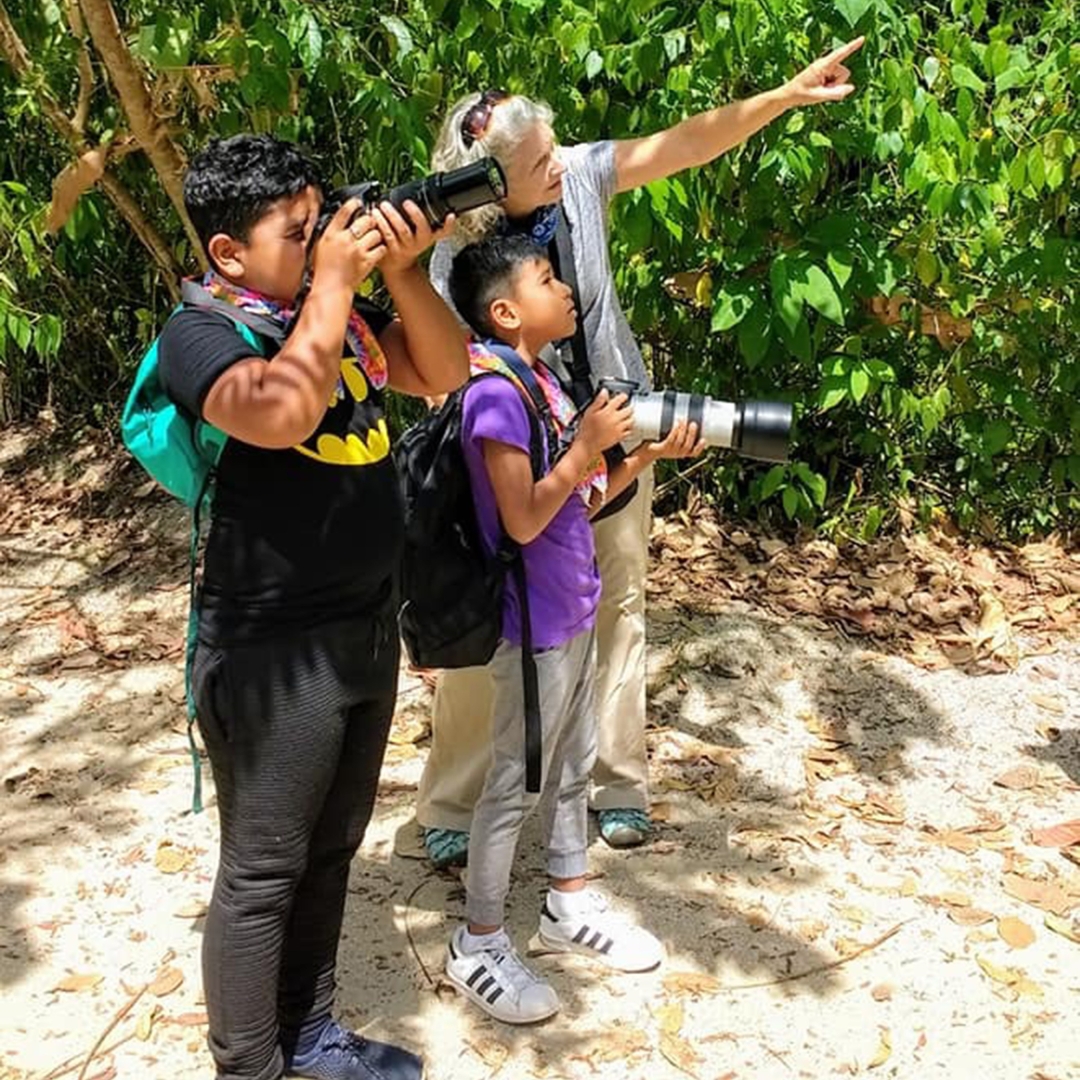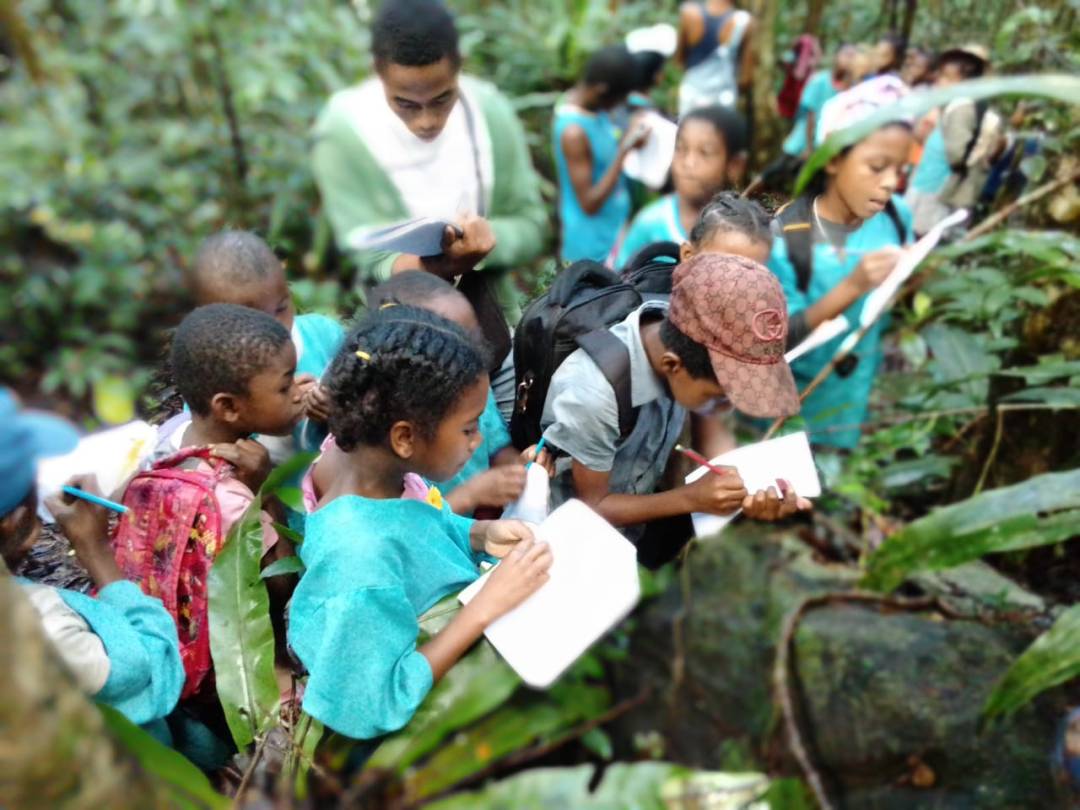How it Works
We aim to provide habitat-country students, teachers and community leaders with the information and skills they need to implement primate conservation approaches in their daily lives and to develop future conservation-compatible careers.
Our goal is to educate students in primate biology, behavior and conservation issues through photography, illustration and storytelling, improving knowledge and inspiring appreciation of the ecological, cultural, and economic value to their communities when protecting primates and their habitats.

Using activity books, workshops and field photography students learn to develop scientifically accurate stories and illustrations and are encouraged to develop unique primate conservation ideas and contribute to their communities using their new skills. A village-wide gathering at the completion of the project celebrates student work and recognize participants as “Forest Ambassadors”.
Coloring and Activity Books. Using a coloring and activity book designed for the project (latest edition here), the students learn about primate species in their area and gain an understanding of the uniqueness of primates in the world and the importance of protecting their habitat. Students learn primate biology, behavior, habitat needs, conservation issues, and the value of primates to tourism and a healthy ecosystem – through discussions, reading, and activities in their coloring and activity books. The participating students have been thrilled with their artistic efforts and excited to share the coloring books and their artwork with their families and communities, expanding the outreach effects.
Field photography and sketching. The students are taken in small groups into the animals’ habitat to spend hours observing and photographing populations of local primates (DSLR Canon cameras, 70-300mm zoom lenses). Participating teachers and elders also join the students in the field. Students are taught to look carefully at their surroundings, to notice the animals and small parts of the ecosystems that they might normally walk past, and learn from the elder’s knowledge and viewpoint. The students also experience being part of the primates’ habitat and gain an appreciation for its behavior and needs. They gain experience in creating detailed observational notes and sketches to accompany their photographs, recording their observations in a small, personal notebook. These notes and stories are scanned, printed, and displayed with the photographs, allowing the experience to be shared by classmates, families, and community members. They have the opportunity to choose their best photographs to be printed onsite, laminated, and made into a display, and the images are also posted on the PICC webpage.

They have permanent access to an internet connected iPad, printer and camera located in their village, along with technical assistance from local IT staff. Under development is a webpage that will provide students with ideas for how to continue developing their communication skills and how to use those skills in creating a career in ecotourism, conservation and community leadership.
Outreach Products with Lasting Effects
A primate conservation book and poster of student photos, drawings and writings will be designed using the PICC students’ creative works, published in the U.S. and shipped back to their community where students can sell the book to tourists to earn funds to support their own conservation education and share the knowledge with other students and communities. A small poster will be published on water-resistant paper and students can distribute the free poster to ecolodges and local and neighboring communities. The poster and book will also be provided to the appropriate government officials as well as available for download online as a PDF.
A 15-minute documentary film will be produced featuring the project students, teachers and elders’ prospective, highlighting the conservation issues faced by primates and habitat communities, and showing the benefits to the community of primate conservation. A detailed storyline will be developed before the project start, with input from local guides, conservation organizations, educators and others. It will be narrated in both the local language and English. The completed film will be provided open-source online for expanded international outreach education and awareness, and to conservation organizations, local educators, and government officials.
The PICC website and teaching resources will be accessible to the participants through the internet connected iPad. A camera, printer and laminator will be permanently housed in the students’ village, giving students and teachers the ability to access the PICC website, other conservation resources, and web links to relevant research and conservation status for species in their area. Students will be able to upload new work to the PICC site, and become active citizen scientists by using iPad apps such as iNaturalist, lemursportal.org, and other conservation applications. Teachers and paid local PICC team members will be available to assist the students.